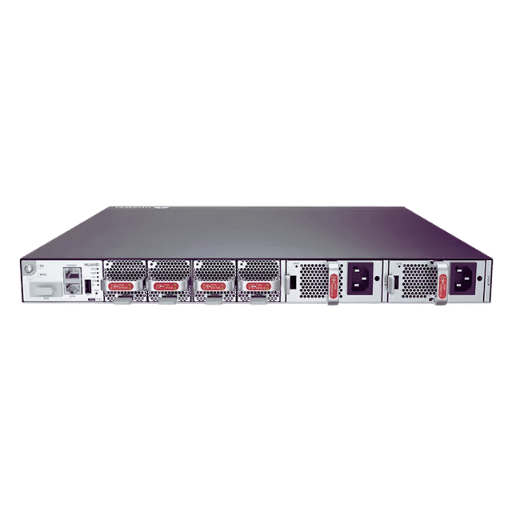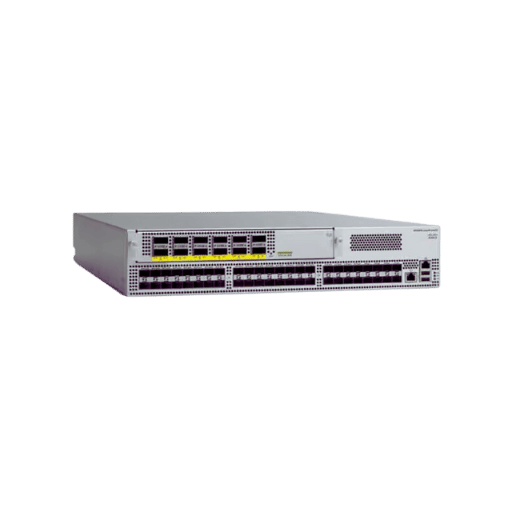In the present day, where everything is technology-based, providing constant power to essential apparatuses is crucial. The APC Rack Automatic Transfer Switch ATS continuously supplies the feeds for these essential systems. Built to automatically switch between more than one power supply and maintain a connection with the instrumental power, the ATS has eliminated the downtime associated with the changing of power sources, thus curbing the effects of voluptuous equipment. The technical features of the device APC Rack Automatic Transfer Switch, including its construction, operation, and the possibility of its use in the existing power support system of the object, will be addressed in this article. In such an extensive review, the understanding of the functionality of such a device that reduces power risks will be comprehended, thus reliability and efficiency in the operations of data centers and other sensitive working environments will be noticed.

An Automatic Transfer Switch (ATS) is one of the most important devices in any power management system for automatic power source selection changeover between the main supply and reserve power sources in seconds. This device detects power-related problems, such as power outages, without interrupting the load and then shifts the load to an alternative power supply. By using an ATS, buildings equipped with critical systems can have uninterrupted power, thus avoiding losing important data or wasting time due to shutdowns. The way power is fed in rows of technical equipment is organized using an APC Rack ATS specially meant for server rooms and data centers, making the IT infrastructure more dependable.
APC Rack Automatic Transfer Switch, or ATS, provides a continuous power supply for IT gadgets in troublesome conditions. Below are the salient features.
This complete set of features means that the APC Rack ATS provides efficient and dependable power management, which is essential for the operation of data centers and other critical systems.
APC by Schneider Electric is familiar with the concept of providing customers with quality services, and there is sufficient trust that they will be able to provide Automatic Transfer Switch (ATS) solutions correctly. Equipped with rugged construction and nice technologies, the APC Products are developed to provide total power reliability and operational continuity to the facility. Such system disconnects switching units have multiple features designed depending on power transfer requirements, such as fast transfer speed and load meter features. Moreover, as adherent to compliance and safety principles, APC ensures that its patented and licensed solutions meet even more stringent performance requirements. Therefore, with this brand, clients are guaranteed their favorite brand and all the desired support and service for their core power management business.

Picture an APC Rack ATS unit seamless transfer between external sources of power. The above stems from the fact that primary and secondary power are being fed into the device, ensuring no power loss. If the primary source is damaged or unavailable, the ATS will almost immediately transfer the load to the secondary source so there will be no power outage. This rapid switching is made possible because of how strong the unit’s automatic transfer mechanism is, thus assuring non-stop functionalities of vital equipment even when changes occur. Furthermore, the ATS contains control logic and sensors capable of providing warning signals when osmotic current abnormalities occur, allowing more efficient switching from one source to the next.
In this case, the transfer time in an APC Rack ATS denotes the time to transfer from the primary source to the secondary source. According to technical guidelines and technical sources that recommend best practices, the time turned out to be less than 10 milliseconds under normal conditions, as is the case with most equipment. This rapid response is vital in ensuring power reliability, especially in situations that require maximum uptime consistent with data centers and centers with special installations.
Improved power reliability is achieved through several technical features built into the ATS system. Key parameters enhancing reliability include advanced voltage sensing circuits, which continuously monitor the voltage levels of both input sources. If a deviation from the preset voltage range is detected, the ATS makes an instantaneous decision to switch sources, thus preventing potential power interruptions. Furthermore, the system contains ruggedized relays/switches that are reliable for the projected high electrical loads to provide additional performance stability and reliability.
Credible sources in the field outline these features and their significance to using an ATS with recommended specifications for the applicable industry standards for the continuity of power and safety concerns. Users of APC Rack ATS systems are empowered with an architecture that is reliable in curbing power outages and strengthening operational availability in advance.
The APC Rack ATS Interface and Management comes with an easy-to-use interface, owing to the development of web-based and Telnet management to suit the different types of users and the network configuration available. The web-based interface has a GUI that is easy to operate and allows configuration, monitoring, and management of the ATS system with an ordinary web browser, hence easily accessible. This assures power distribution supervision of the consumers and prompt reactions to alerts.
The CLI is yet another option for those interested in text-based configuration and supervision or when such configuration and supervision is mandatory, as in most sites where graphics users may be restricted due to bandwidth or specific security issues. Both interfaces offer remote access to the management features, increasing efficiency as physical interaction with the device is cut down while enabling safe and effective management and control of the power systems in the system.
Blanking Panels for Power Circuits are compact power distribution equipment. They are made in the ultra-deep 1U form factor, which is advantageous for installations with shallow rack depth. Such switches have built-in features that allow automatic switching of power to the main supply. Basic features include input redundancy, power-out LED indicators for real-time monitoring, and low-power deployable preset levels. These are especially useful for data centers and networks where performance and downtime are primary dimensions.
Designed to let the APC NetShelter Rack Automatic Transfer Switch be done quickly, loss of power does not occur due to the rapidity of switches. Suitable for complex rack ecosystems because of dual power inputs, this enhances redundancy. This switch complies with critical load protection requirements by remote management notification of events and status monitoring. It integrates readily into available structures without taking up too much space in the rack, and normal operational time is always expected.
In the case of 120V and 230V Automatic Transfer Switch (ATS), certain factors, such as the working environment and the particular power system to which the products will be used, should form the basis of their comparison. 120V ATS models are normally applied in areas where 120 volts is the standard voltage, which mostly includes North America, and the equipment intended for use within this voltage range is adapted. On the other hand, 230V ATS models are used in regions where 230 volts is the standard, and this is mostly in Europe and some other parts of the world where there is a demand for equipment with higher voltages. Each model has its benefits; 120V models prefer low-voltage applications due to efficiency. Models 230,, however,, provides the power equipment operating at higher power requirements more efficiently. Following the above, it is important to reiterate ATS modeling and selection as it is of paramount significance for the effective and precise distribution of tailored power and, therefore, giving infrastructural designs that would fit the operational needs and functional efficiency of power at the prescribed voltage level.
An APC Rack ATS unit is to be mounted in a preferred and appropriate location within the rack, ensuring airflow clearance and ease of maintenance. The ATS unit must be fitted in the unit with the mounting rails or brackets provided with the rack system to prevent movement of the unit. The primary and secondary power sources must be connected to the respective inputs on the ATS while ensuring that the connections meet the required voltage and load ratings. Proper outgoing cables from the ATS unit should be routed to prevent interference with other rack devices, and adequate cable management should be maintained. Lastly, switch the ATS unit on and use the remote management support to set up monitoring and control of the ATS performance to complete the task in the context where it fits.
Setting up APC Rack ATS Dual input power sources includes some crucial operational steps critical for ensuring system reliability. Start off by checking that the two input power sources are within the specified voltage and amperage limits. The two cables should be connected to the designated input terminals on the ATS using appropriate power cords. Make certain that the primary source is turned on before turning on the secondary source, which is provided as a safeguard in case the primary source fails. Power source re-allocations should be automatically controlled by the ATS system in order to protect the continuity of the operation fully. Ensure the stability of both inputs regularly and infrequently correct the inputs so as to avoid loss of conditions necessary for the proper performance.
To ensure redundancy in the power supply of single-corded equipment, an Automatic transfer switch (ATS) is desirable so that both power sources are available at the push of a button without the need to be plugged or unplugged. The ATS must be placed to link the single power input of the equipment to two different power feeds. When the primary source fails, the secondary source bylaws and the ATS switch to it where power is delivered. Moreover, the UPS system should be integrated as an exceptional device to cope with short temporal quits or even supply uptime power during the switchover so that more trust could be applied to delicate or critical devices. All parts must be periodically tested and serviced to ensure the redundancy apparatus functions properly.

One of the benefits of using an APC Rack ATS is that it provides power for uninterrupted operation by switching on a backup source whenever the active supply fails. It ensures minimum interruptions in the power supply to critical equipment controlled within the facility. The system’s design incorporates scalability and is overpowered when connected to the system’s power requirements. Standard system maintenance and testing procedures are sufficient to ensure reliability and avert extreme unsettlement.
In this concept, the APC Rack ATS has a faster than 10 ms transfer time. This avoids disrupting the connecting devices during the power source changeover. The critical loads have complete power, as there is no regard for load interruption continuity. In addition, there is better power management due to effective load management and monitoring, which optimize the system’s performance, reducing power-related challenges.
APC Rack ATS units have enhanced network management, increasing the entire system’s control and efficiency. These devices have built-in network cards that facilitate the management of the power distribution network, and such devices can be monitored and controlled in real-time based on the status of the network. This gives the administrators a good opportunity to observe load even when they are far away and get notified of any possible problems, thus aiding in the control of the power environment. The operation of the system with different communication networks guarantees that it can be incorporated into any existing IT environment, thereby enabling efficient control and management of power resources in the data center or IT facility.

Individuals who are willing to buy the APC Rack ATS are able to obtain these units within a network of authorized distributors of APC by Schneider Electric products. Schneider Electric accepts these distributors after scrutinizing and certifying them to ensure that the clients receive genuine products and dependable service and support. For an authorized distributor, you can log onto the Schneider Electric website or call their customer care for assistance. One must be careful when buying an approved product as this also comes with fully backed-up warranty support.
APC Rack ATS units can be sold over the internet using various promising outlets including general online shops, networks, and shops which specialize in IT equipment. These sites are not complicated, and they are able to process and deliver products quite easily. Furthermore, customer opinions are often presented on such platforms which can be useful in the decision-making process. It is recommended that the credibility of the seller be examined prior to placing an order in order to avoid disappointment with the integrity of the product and warranty services.
In the United States, APC Rack ATS is easy to reach through various means, such as APC by Schneider Electric`s official online store, partners, and other online shops. For customers who intend to buy outside the USA, the APC rack ATS is additionally supplied in many nations worldwide with the assistance of official distributors and other partners. This wide distribution network enhances the chances that businesses will be able to source dependable power management systems covered with appropriate local support and warranty. For specific availability and purchase options in your area, please check on the APC by Schneider Electric site or call the local offices.
A: An APC Rack Automatic Transfer Switch supplies a secondary power feed to single-wired equipment installed in the rack. This device has two power inputs and automatically selects one power supply without any transmission lapse to the load.
A: The best thing about the APC Rack ATS is its efficient speed in taking over supply, improved switching of outlets, and capability to power a load with single-corded equipment. It allows the provision of backup rack mount power, which increases the availability of critical equipment.
A: Well, many of the APC Rack ATS models can utilize Snmp, which stands for simple network management protocol, so that the device can be remotely monitored and managed. This helps managers anticipate potential problems and act promptly because they can monitor the power status from many places and receive alerts.
A: APC Rack ATS models have different sizes, whereas 16A ATC is common. But for those who look for diverse options, NetworkTigers provides several designs of high-availability switches of even larger sizes.
A: Short circuit condition will initiate an immediate transfer to an alternative supply during which the connected load/equipment is at risk of damage.
A: The APC Rack ATS devices can be upgraded in software and firmware installed on the hardware, and it is preferable to do that regularly to improve some defective areas in performance.
A: Although both of them are used for power distribution to rack procurements, the APC Rack ATS distributes power on dual available sources by switching to and from the power sources depending on status. Normal PDU devices comprise one power input connection only and hence do not possess auto failover commutation.
A: When working with an APC Rack ATS, such factors include, among others, determining the overall power consumption of attached equipment, available primary and secondary power sources, available rack space, and remote management networking ability. Make sure that the input power cords which are taking the power supply to the ATS are connected to different power sources for true redundancy as both of them should be attached to independent power sources.